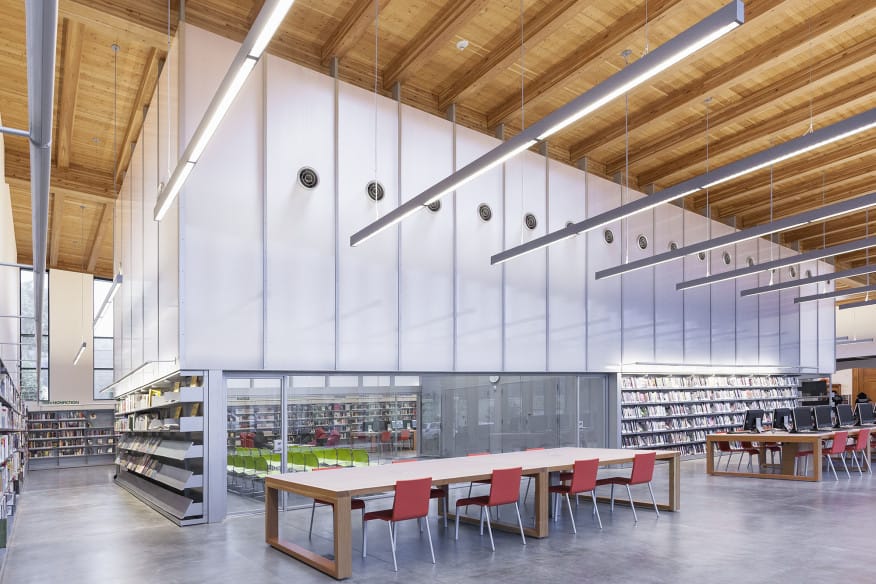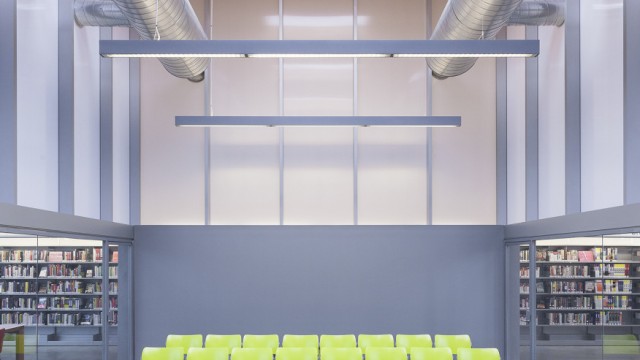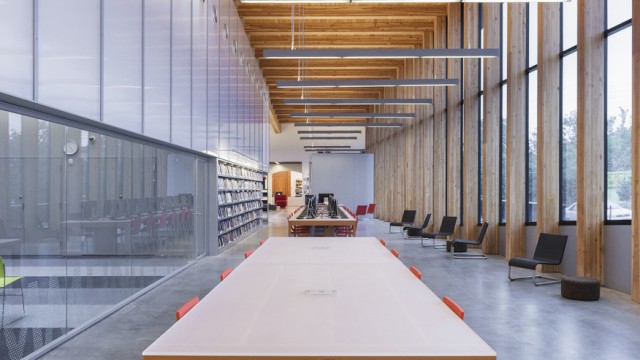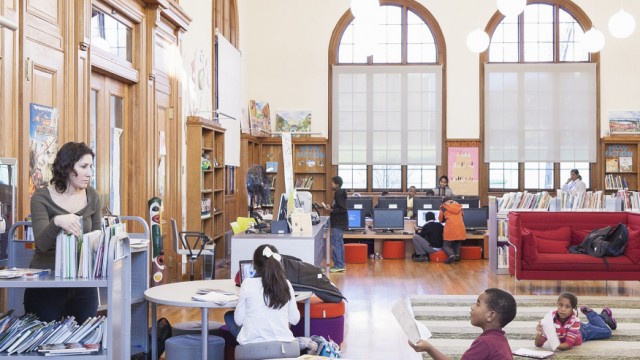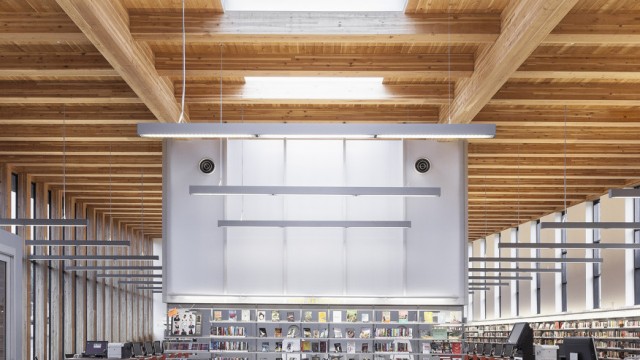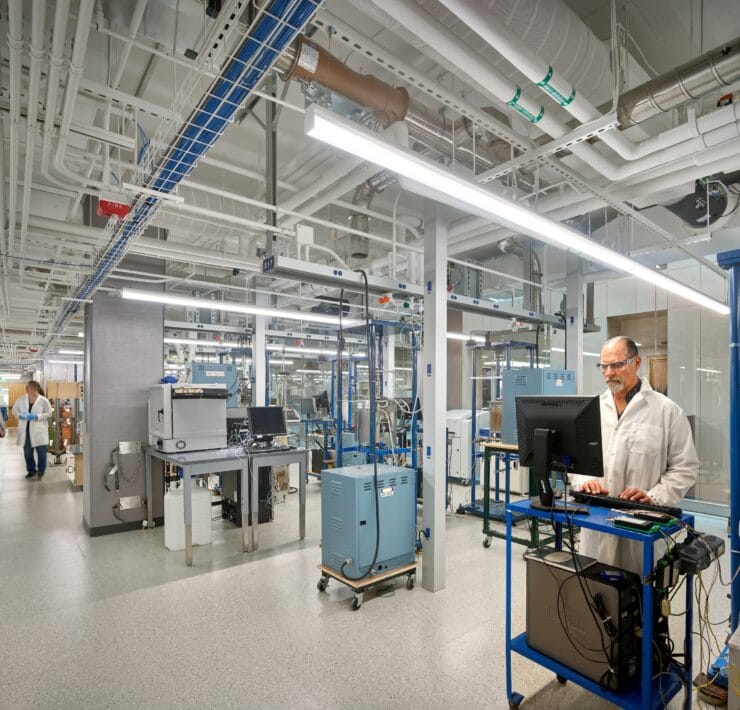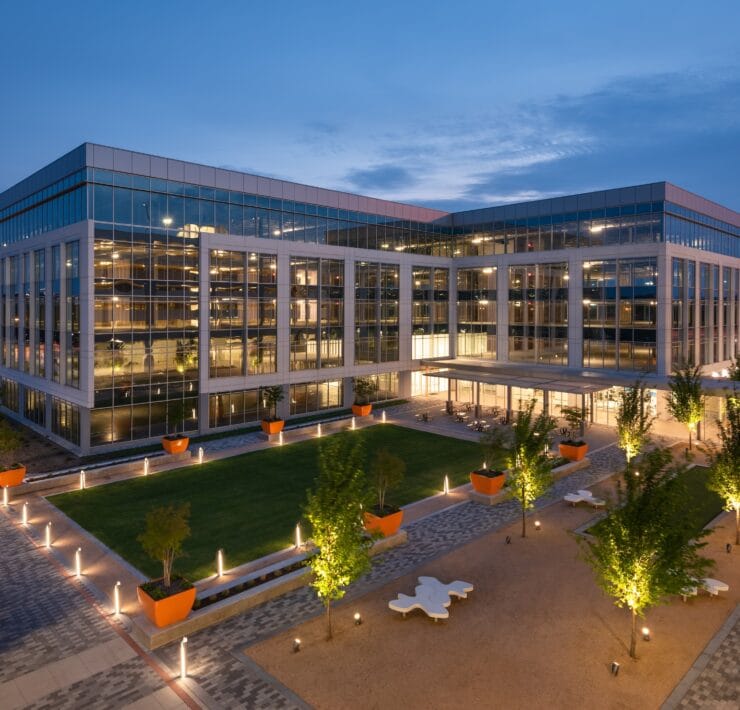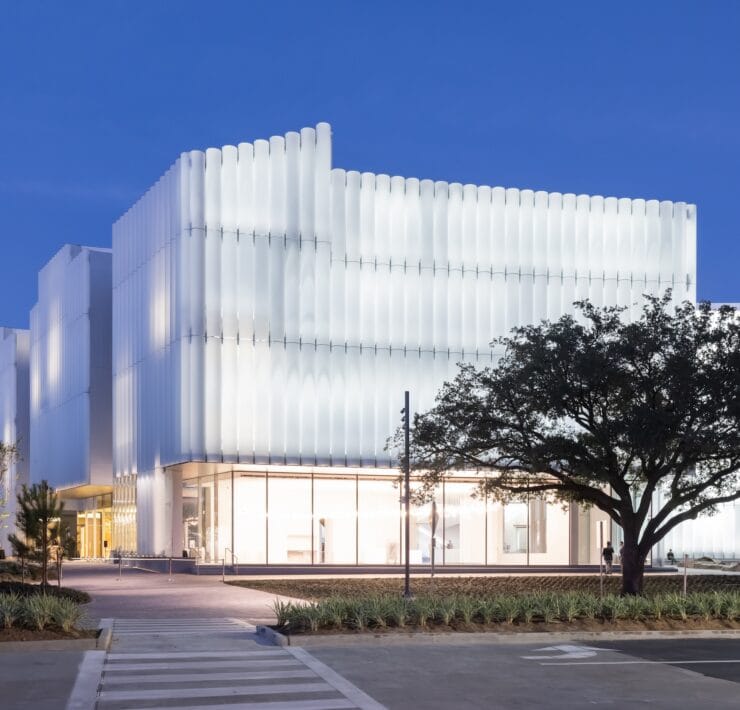The new 12,000-square-foot addition to the Stapleton Library on Staten Island is a luminous rectangular box that flowed easily from the previous structure.
Public libraries have always played a civic role, serving both as communal gathering spaces and as vehicles for providing free access to information for all. That dual service, and the responsibility that comes with it, has never been more important as society completes it transitions to the digital age. Libraries around the United States need to continue to be that place where anyone can go to check out the latest book, use reference materials, and take his or her kids to story hour. But today’s libraries also have to provide computer stations that have Internet access and all types of media in digital formats.
The village of Stapleton on the south shore of the New York City borough of Staten Island is one community that understands the importance of having a library as a public amenity—and what it means when that resource is in jeopardy.
The lighting scheme designed by CBBLD Lighting Design captures the essence of the architecture both in its form and in its material sensibility. CBBLD challenged themselves to see if they could find a single lamp type that could meet the needs of the entire project. “We went around the building looking at what needed to be lit and where we could put the light,” Bernstein says. The CBBLD team decided on a 4-foot T5 linear fluorescent suspended fixtures. (Since the project started in 2009, LED technology wasn’t yet at the forefront of luminaire offerings as it is today.) In the main reading room and community room, the decision translates into a 28W 3000K T5 linear fluorescent direct/indirect pendant that provides 25 foot candles. These luminaires are suspended from aircraft cable and align with the horizontal mullions of the windows and the vertical wood columns of the front curtainwall. The rectangular form of the fixtures complements the shape of the Douglas fir ceiling beams and the fixture’s datum of light becomes another architectural feature. “There isn’t much reliance on over-decoration,” Bernstein says. “The decoration is the palette of materials that were being used. Our lighting had to respond to that, and in its own way had to be an architectural element within the space.”
Alcon Lighting creative director and co-founder David Hakimi works to improve lighting through research, development and education. David strives for efficiency in lighting, affording architects, lighting designers and engineers the ability to maximize LED lighting design and application. David is a graduate of the University of California, Los Angeles, where he received a Bachelors in history. David also studied lighting design at IES in Los Angeles. He traces his and Alcon Lighting’s commitment to innovation, accountability, quality and value to lessons learned from his father, Mike Hakimi, a lighting craftsman, salesman and consultant in Southern California for more than four decades. Today’s lighting for commercial use requires a deep, complete understanding of smart lighting systems and controls. David takes pride in his lighting, energy controls and design knowledge. He is driven by the desire to share his insights into lighting specification and application. This quest to share his knowledge was the impetus for David to create Insights, Alcon Lighting’s blog and resource center for helping the reader understand lighting and its application to space.

